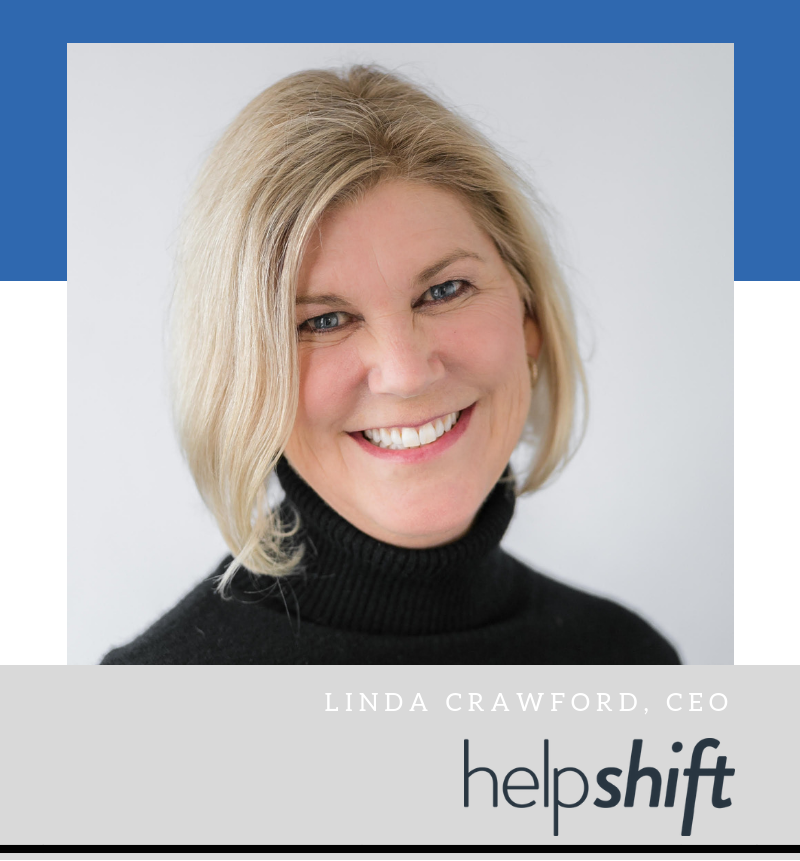Career Advancement Tips From Helpshift CEO Linda Crawford
By True Ventures, January 31, 2019
In 2018, only 24 out of 500 of the CEOs of Fortune 500 companies were women. This lack of gender parity among executive positions, where change can often be implemented and permeate across teams, is one of the reasons sales technology vet’ Linda Crawford left retirement to become the chief executive officer of Helpshift, a digital customer service platform we backed in 2012.
“I thought about joining boards and doing some advisory work, but then with all that happened with Ellen Pao and Uber, where women were being unfairly treated, I thought the only way we’re going to fix this is with more women CEOs,” said Crawford. “That motivated me. I thought, do I have 10 years of gas left in the tank? Yes. I asked myself how I could make those 10 years really count for women.”
Beyond leading by example, Crawford realized that filling a CEO position would give her the ability to advocate for diversity in the boardroom and influence startups’ compensation strategies and family leave policies, two areas that could use champions.
Since Linda joined the Helpshift team in 2017, the company has seen a 100 percent increase in annual recurring revenue, opened several new field offices to support expansion, and made G2 Crowd’s 2019 list of the top 100 software products.
Here, we interview Crawford to get her take on how startup employees can advocate for themselves and their careers, no matter their experience level.
True Ventures: Last year, you were interviewed for a segment covering fair and equal pay. You suggested that women who believe they aren’t being compensated fairly, simply ask their employers: Am I being fairly and equally paid? With whom should they have this conversation and in what manner?
Linda Crawford: A lot of women wait for people to notice their hard work. They think everyone must be noticing and they’ll get promoted. We tend to bottle it up, and therefore it becomes an awkward conversation when the topic is approached.
The more conversational you are with your manager over the course of time and in your weekly one-on-ones, the better. If you want to talk about your career progression, mention that you saw an article about equal pay and are hoping to discuss it.
Or, ask what your company’s policy is for equal and fair pay. If your manager isn’t able to answer, I think it’s your right to go to your boss’s boss, someone in HR, or the CEO. If you can advocate for this cause within your company and have these conversations on an ongoing basis, it makes it easier to discuss.
True: Is it a professional faux pas to approach your boss’s boss with this question, though?
LC: It doesn’t have to be without your manager present. Ask if the two of you can go together and express that you feel strongly about this issue. If there is a woman executive at your company to go have a conversation with, it might be good to go and have that conversation with them.
True: What’s your best career development advice for experienced startup employees who are looking to make the leap to executive-level positions?
LC: As you get there, you are measured mostly on your operating skills. Ask yourself if you can inspire your employees to live up to the expectations of what the company needs from your department or division, whatever that might be.
As you move up the ranks, operating know-how across departments is increasingly important. So know, for example, how marketing and sales work together, how customer success and marketing work together, and how customer success and sales work together.
Also, for those kinds of positions, you want to build a fanbase, cheerleaders. This takes shape as really strong peer-level relationships so that when you go for that position, your peers are advocating for you to get that role.
If you’re shooting to become a direct report to the CEO, it goes without saying that you need to have a relationship with the CEO. If you don’t, start building one, and tell them your intent. If the CEO doesn’t believe you’re ready, have that tough conversation. If they say, “Hey, I feel like you have these blind spots,” or “You do have these skills,” at least you know what’s going to be required of you.
True: How can startup employees at any level advocate for themselves?
LC: If you feel uncomfortable bragging about yourself, do it in a really simple way by saying, “I just want to share something I’m really proud of,” and/or explain that this piece of work was really well received or had a specific desirable outcome.
I also like to say your boss is looking for the news, because when they go have their managers’ meetings and one-on-ones up the chain, everybody’s sort of repeating certain headlines. You want to be the headline in your town paper, if you will. It doesn’t have to happen every week, but you should be sprinkling these things and thinking about it regularly.
Therefore, when it comes to the question of whether or not you could do this job or that job, or there’s this promotion opportunity, your name comes to mind right away. If you’re continually advocating for yourself between review cycles and showing what you’re proud of and it gets talked about, then it won’t be a surprise when you ask if you’re a candidate for promotion.
True: What’s in store for Helpshift this year? Is there anything in particular you’re very excited about?
LC: We are doing our best to repeat the story of 2018. We doubled our ARR last year and this year, we want to grow revenue by 85 to 100 percent.
What makes me excited is the fact that we are opening up what we have done in the gaming industry to other industries. We’ve kind of been the de facto in-app support product for gaming companies. We now have brought our product, not just mobile in-app, to the web; we did that about a year and a half ago.
The market is waking up to what we’re doing with this notion of asynchronous messaging, which means you have these experiences as a consumer with a brand much like you’d have conversations with friends and family. Some of that’s been fueled by the fact that our customers want to drive more automation into their customer service processes and that’s getting done with AI.
We feel like we have a very unique point of view in terms of how AI, bots, agents, and consumers all work together. I say right now 75 percent or more of our pipeline for Q1 is not gaming, which is just game-changing for us as a company, no pun intended.
It’s fun competing with what I’d call legacy companies, my former employers included, that are 20 years old now. You know, we are the new kid on the block. So it’s really fun.


